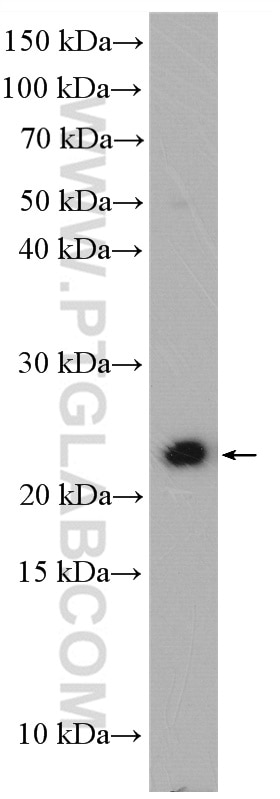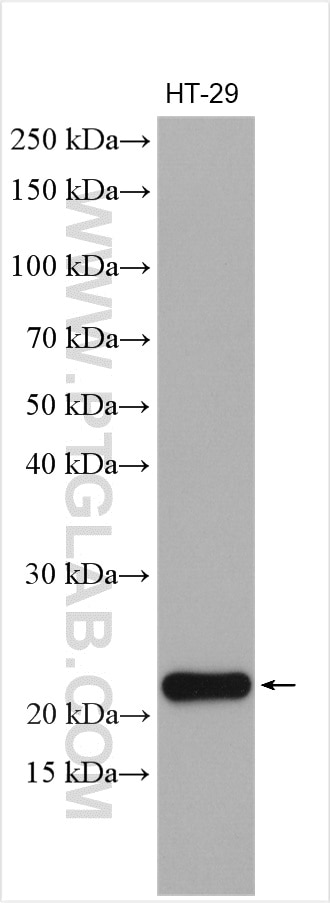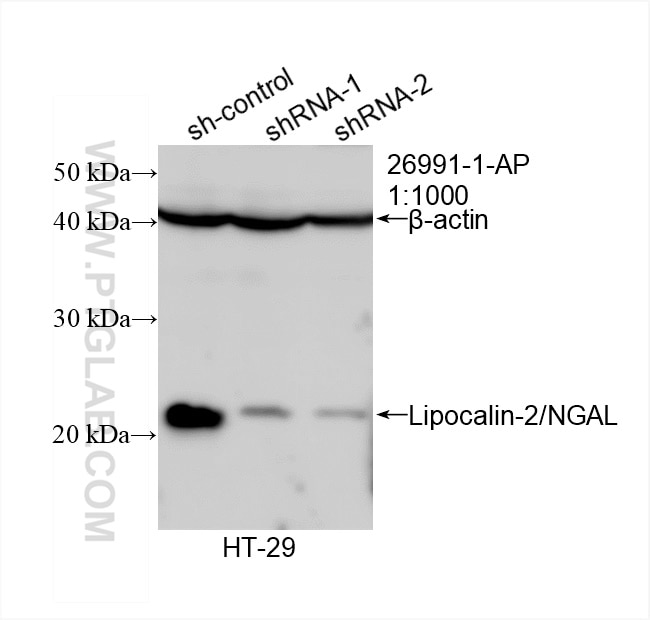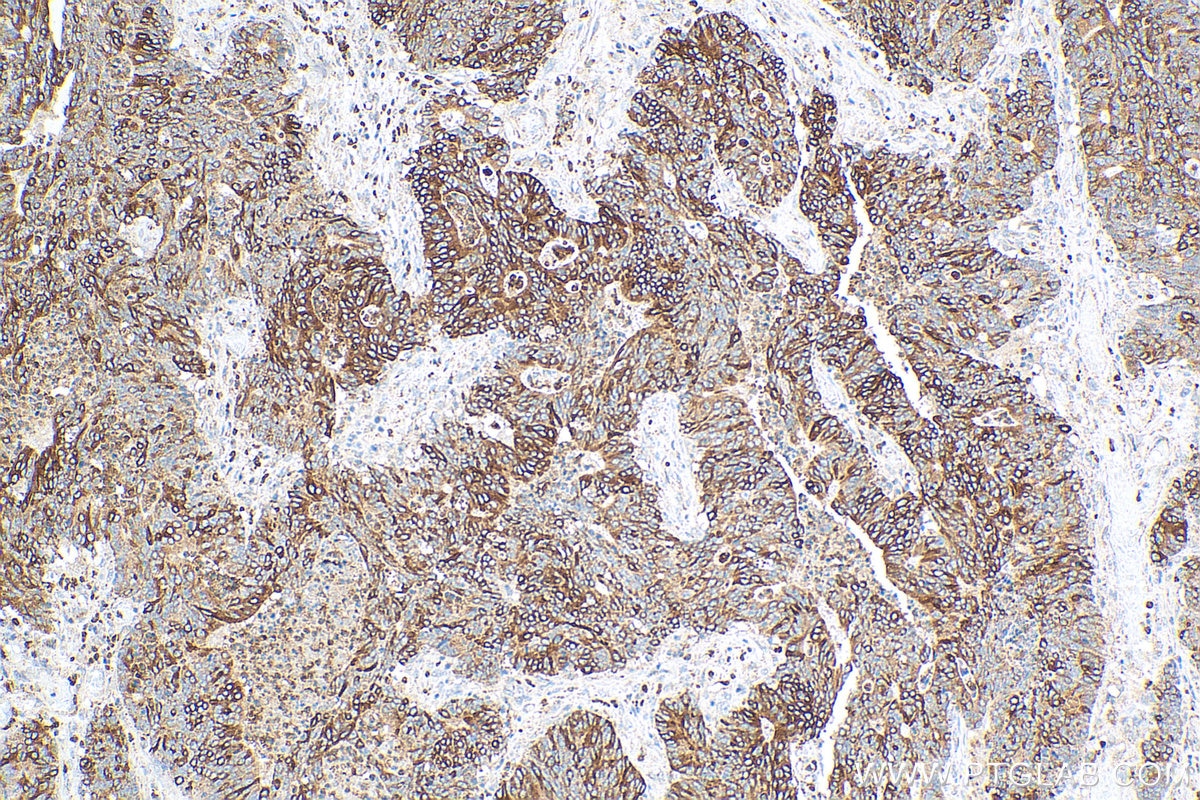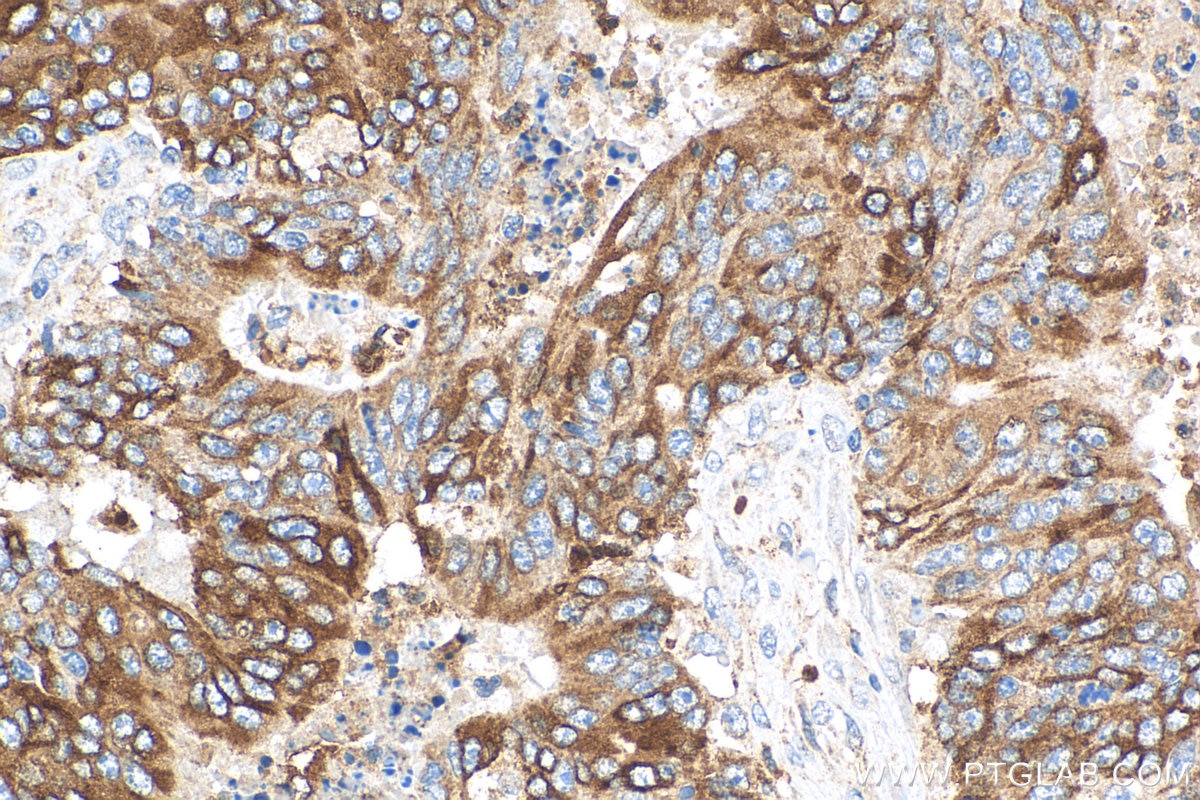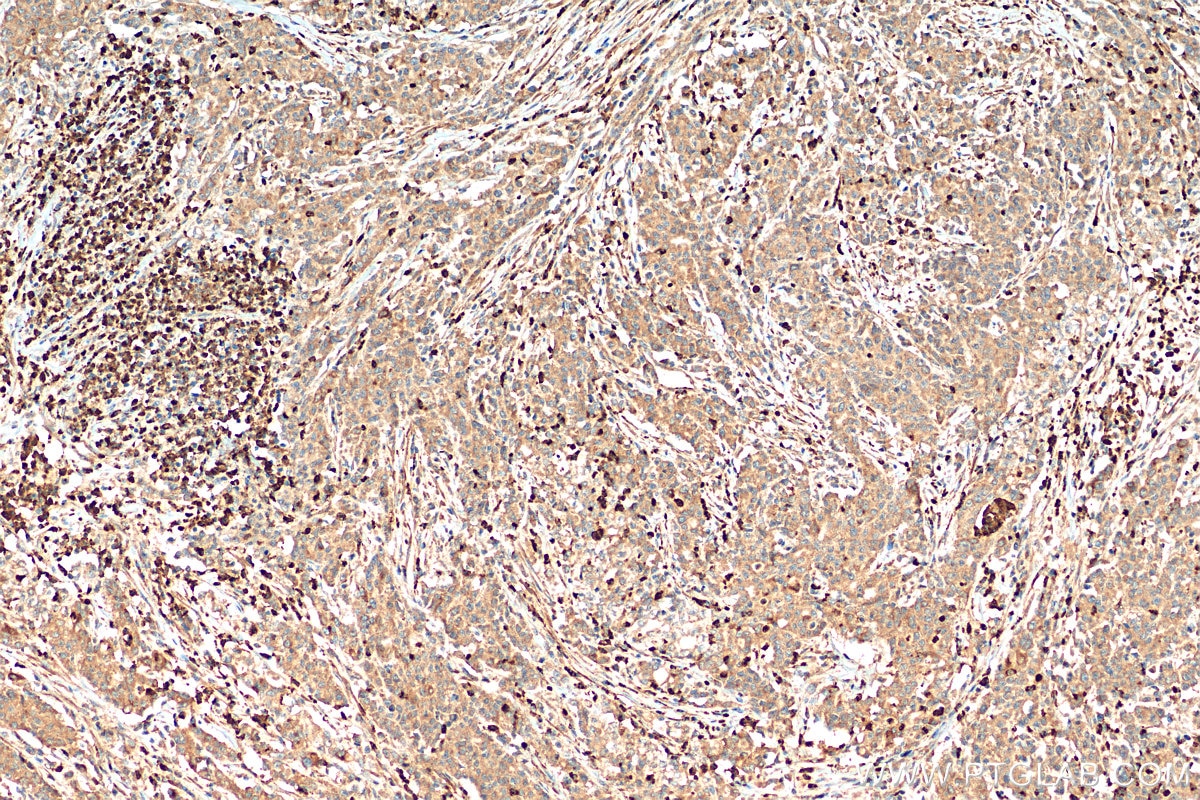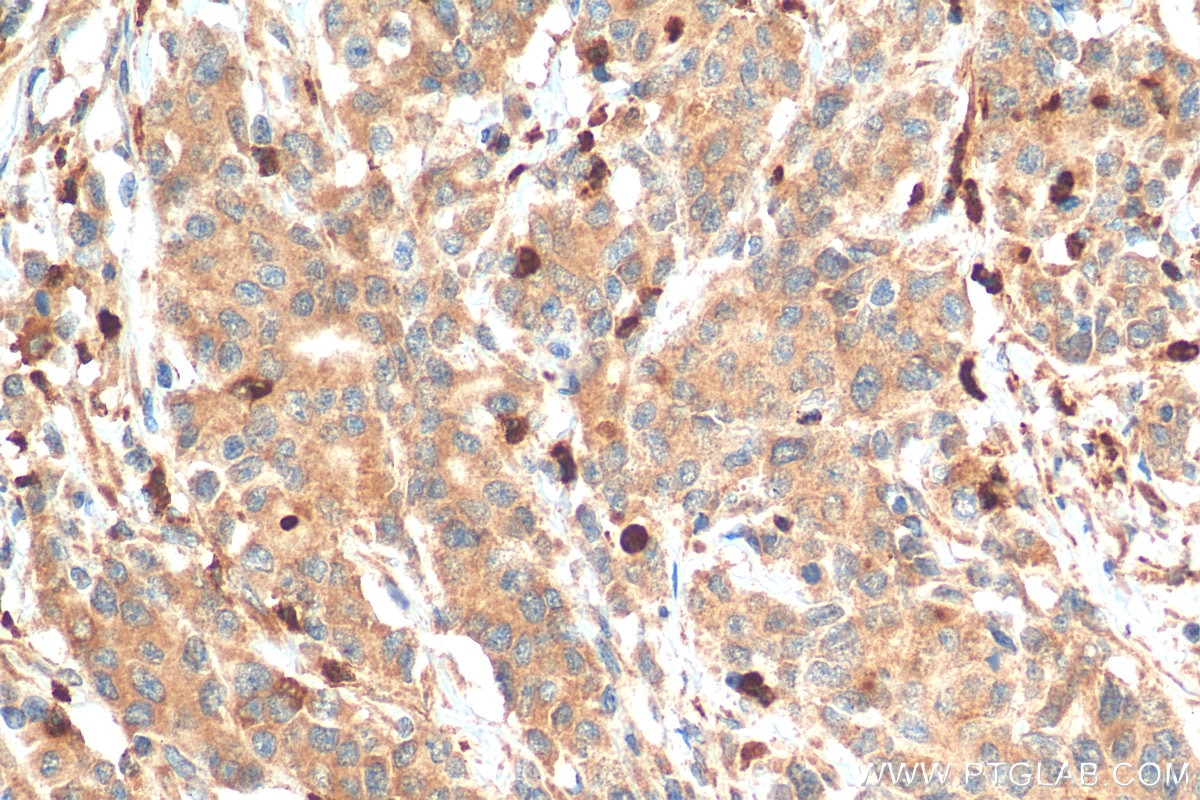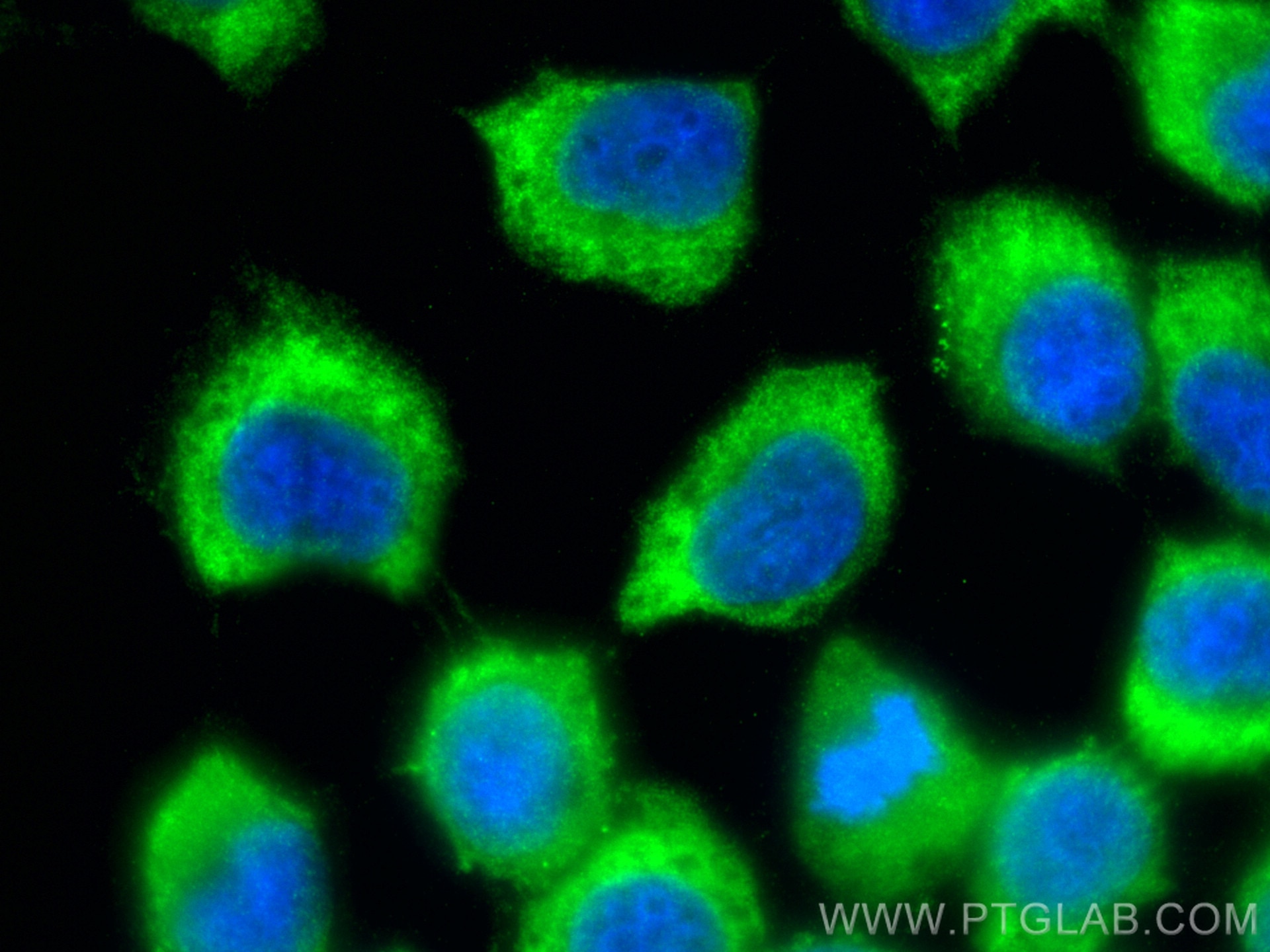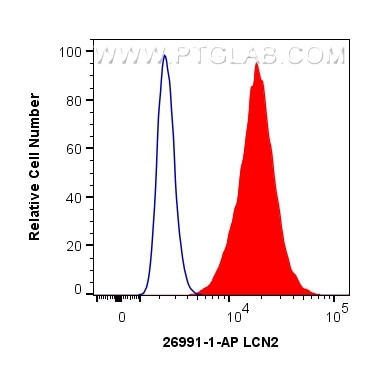- Phare
- Validé par KD/KO
Anticorps Polyclonal de lapin anti-Lipocalin-2/NGAL
Lipocalin-2/NGAL Polyclonal Antibody for WB, IHC, IF/ICC, FC (Intra), ELISA
Hôte / Isotype
Lapin / IgG
Réactivité testée
Humain
Applications
WB, IHC, IF/ICC, FC (Intra), ELISA
Conjugaison
Non conjugué
N° de cat : 26991-1-AP
Synonymes
Galerie de données de validation
Applications testées
| Résultats positifs en WB | cellules HT-29, salive humain, salive humaine |
| Résultats positifs en IHC | tissu de cancer du côlon humain, tissu de cancer de l'estomac humain il est suggéré de démasquer l'antigène avec un tampon de TE buffer pH 9.0; (*) À défaut, 'le démasquage de l'antigène peut être 'effectué avec un tampon citrate pH 6,0. |
| Résultats positifs en IF/ICC | cellules A431, |
| Résultats positifs en FC (Intra) | cellules A431 |
Dilution recommandée
| Application | Dilution |
|---|---|
| Western Blot (WB) | WB : 1:2000-1:10000 |
| Immunohistochimie (IHC) | IHC : 1:50-1:500 |
| Immunofluorescence (IF)/ICC | IF/ICC : 1:50-1:500 |
| Flow Cytometry (FC) (INTRA) | FC (INTRA) : 0.40 ug per 10^6 cells in a 100 µl suspension |
| It is recommended that this reagent should be titrated in each testing system to obtain optimal results. | |
| Sample-dependent, check data in validation data gallery | |
Applications publiées
| KD/KO | See 3 publications below |
| WB | See 33 publications below |
| IHC | See 12 publications below |
| IF | See 9 publications below |
Informations sur le produit
26991-1-AP cible Lipocalin-2/NGAL dans les applications de WB, IHC, IF/ICC, FC (Intra), ELISA et montre une réactivité avec des échantillons Humain
| Réactivité | Humain |
| Réactivité citée | Humain |
| Hôte / Isotype | Lapin / IgG |
| Clonalité | Polyclonal |
| Type | Anticorps |
| Immunogène | Lipocalin-2/NGAL Protéine recombinante Ag25715 |
| Nom complet | lipocalin 2 |
| Poids moléculaire observé | 25 kDa |
| Symbole du gène | NGAL/LCN2 |
| Identification du gène (NCBI) | 3934 |
| Conjugaison | Non conjugué |
| Forme | Liquide |
| Méthode de purification | Purification par affinité contre l'antigène |
| Tampon de stockage | PBS with 0.02% sodium azide and 50% glycerol |
| Conditions de stockage | Stocker à -20°C. Stable pendant un an après l'expédition. L'aliquotage n'est pas nécessaire pour le stockage à -20oC Les 20ul contiennent 0,1% de BSA. |
Informations générales
Lipocalin-2 (LCN-2) is a adipocytokine also referred to as neutrophil gelatinase-associated lipocalin (NGAL). Lipocalin-2 is a circulatory protein responsible for the transportation of small and hydrophobic molecules to target organs. Lipocalin-2 is used as a biomarker for acute and chronic renal injury. It is present in a large variety of cells including neutrophil, hepatocytes, lung, bone marrow, adipose tissue, macrophages, thymus, non-neoplastic breast duct, prostate, and renal cells. Different functions have been associated with Lipocalin-2, including antibacterial, anti-inflammatory, and protection against cell and tissue stress (PMID:34463264).
Protocole
| Product Specific Protocols | |
|---|---|
| WB protocol for Lipocalin-2/NGAL antibody 26991-1-AP | Download protocol |
| IHC protocol for Lipocalin-2/NGAL antibody 26991-1-AP | Download protocol |
| IF protocol for Lipocalin-2/NGAL antibody 26991-1-AP | Download protocol |
| FC protocol for Lipocalin-2/NGAL antibody 26991-1-AP | Download protocol |
| Standard Protocols | |
|---|---|
| Click here to view our Standard Protocols |
Publications
| Species | Application | Title |
|---|---|---|
J Neurol Neurosurg Psychiatry Molecules of senescent glial cells differentiate Alzheimer's disease from ageing | ||
Cell Chem Biol 3D two-photon brain imaging reveals dihydroartemisinin exerts antiepileptic effects by modulating iron homeostasis. | ||
Oxid Med Cell Longev Sirtuin 1 Induces Choroidal Neovascularization and Triggers Age-Related Macular Degeneration by Promoting LCN2 through SOX9 Deacetylation.
| ||
Gastric Cancer Lipocalin-2 negatively regulates epithelial-mesenchymal transition through matrix metalloprotease-2 downregulation in gastric cancer.
| ||
Biochim Biophys Acta Mol Basis Dis Lipocalin-2-mediated intestinal epithelial cells pyroptosis via NF-κB/NLRP3/GSDMD signaling axis adversely affects inflammation in colitis | ||
iScience Mutational burden of XPNPEP3 leads to defects in mitochondrial complex I and cilia in NPHPL1 |
